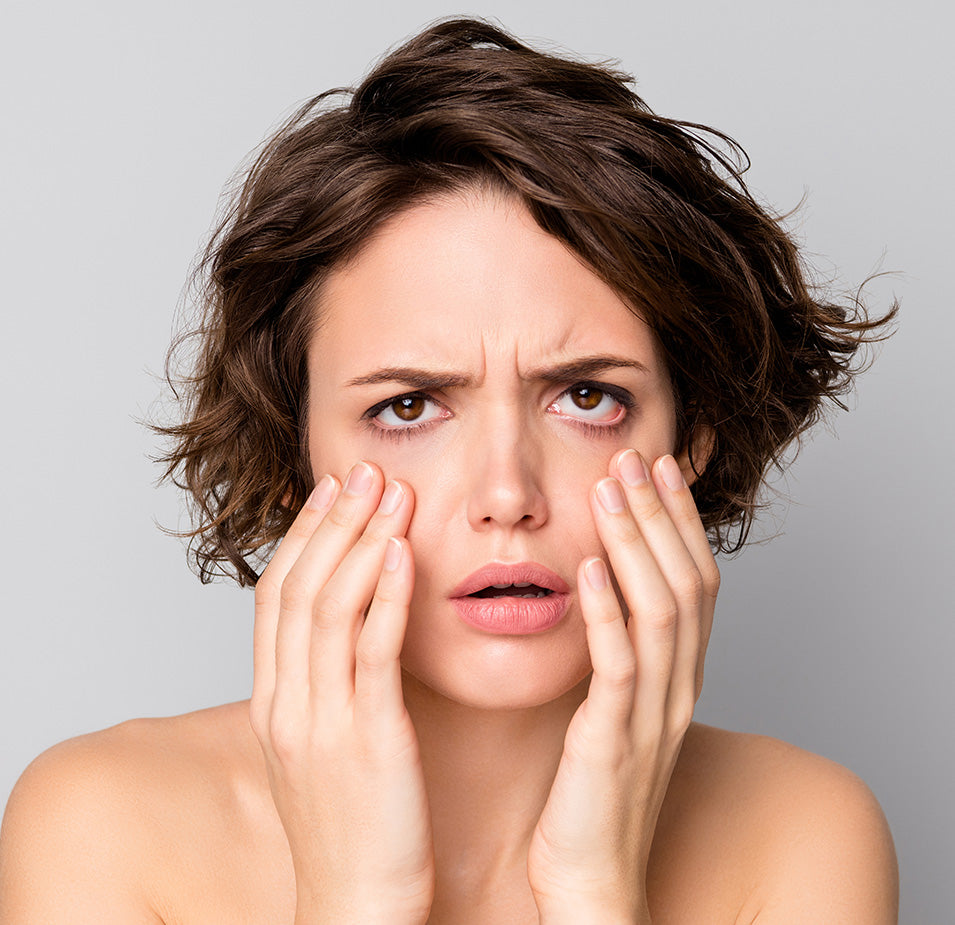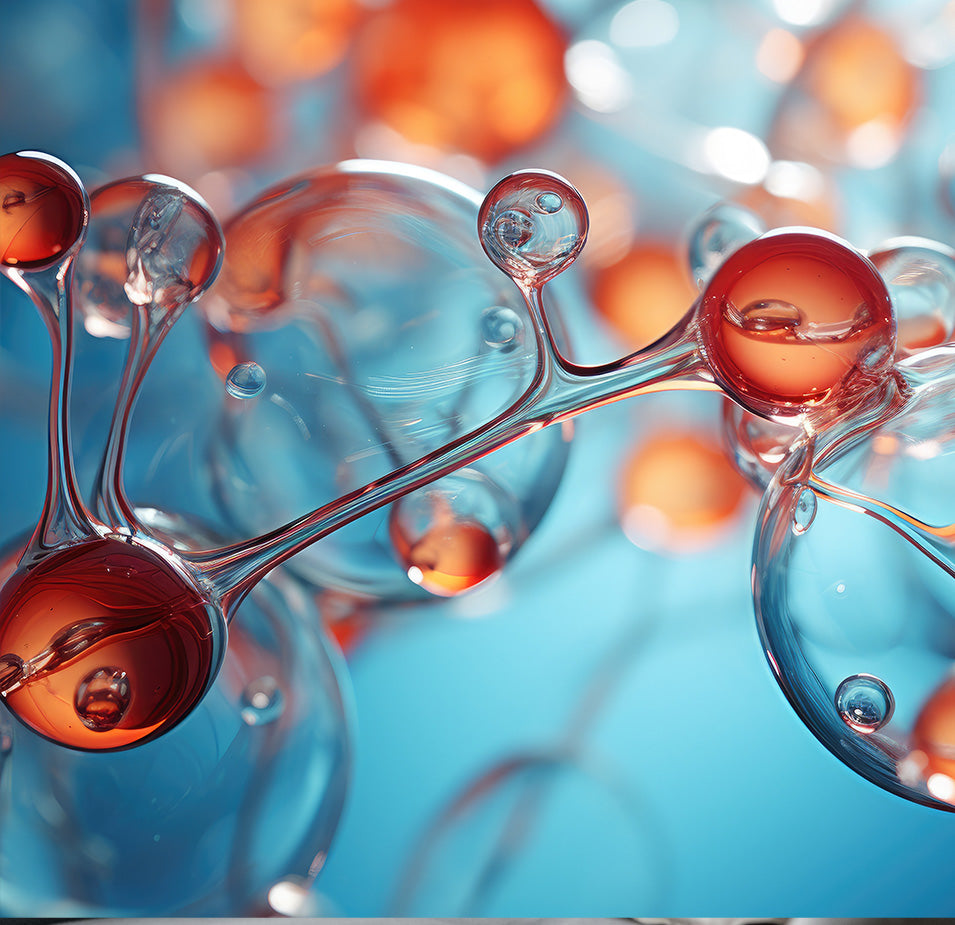
As someone who is proactive about skin health, chances are you’ve taken a quiz that assigned you one of four skin types: dry, normal, oily, or combination.
The truth is, these reductive skin type labels have little to do with reality. The real secret to your skin involves your genetic profile, ethnicity, climate, lifestyle, and more.
Have you gone through the frustrating experience of purchasing an enticing new facewash, only to get breakouts as a result? Or, on the opposite end of the spectrum, have you seen drastic improvements in your skin texture after switching up your skincare regimen?
That’s because what works well for one person may or may not work at all for another. We all have different skin types, and understanding your individuality is the key to maintaining healthy, glowing, well-nourished skin.
The Role of Ethnicity in Skincare
All skin tones are beautiful, and each has its own unique structural and functional makeup. This means that skincare protocols must take ethnicity and genetics into account.
What Are the Four Most Common Skin Types?
Generally speaking, there are four major skin groups based on ethnicity. These are:
- African
- Asian
- Caucasian
- Latin
Understanding your skin type can explain how your genetic and ethnic background influence the aging process.
Skin Color and Melanin Composition
The most important difference between the four skin groups in terms of function and structure is skin color. One of the major factors of skin color is melanin. The more melanin you have, the darker your skin will appear.
The concentration of melanosomes, or melanin-producing cells, is twice as high in deeply pigmented (darker) skin compared to light skin. Additionally, the decay of melanosomes is slower in those with darker skin tones.
People of Caucasian descent have scattered and smaller melanosomes, which explains their fair-toned skin. People of African and Latin descent have a single layer of larger melanin-producing cells in their skin, producing golden, brown, and black tones.
Melanin and Sun Protection
Does melanin serve any other function aside from aesthetic appearance? One of the primary functions of melanin is its response to sunlight. Those with higher melanin content are born with built-in UV protection.
As we all know, UV rays are very harmful to the skin. Prolonged exposure can damage skin and can also aggravate the risk of certain cancers and sun disorders.
If you have a darker skin tone by ethnicity, you are less likely to experience sun damage and premature aging. Photoaging, or physical signs of aging influenced by solar exposure, happens at different rates for people of different genetic makeup. The rate of photoaging is highest among Caucasians and lowest among the Black population.
However, studies suggest that melanin-rich skin shows aging signs in different ways. Those who have relatively higher melanin content in their skin, such as South Asians and people of Latin descent, are more prone to developing hyperpigmentation and sunspots compared to lighter-skinned people.
Thus, sun protection is important and beneficial for all skin types. While dark-skinned people are less prone to sunburn and photoaging, complications like pigmentation issues can arise.
Structural Differences Among Skin Types
Structural skin composition among people of different ethnicities also varies. The thickness and compactness of the skin impact longevity, stability, and elasticity.
For example, Caucasian skin is more delicate, causing it to lose elasticity and collagen fibers with advancing age. This results in the early appearance of wrinkles and fine lines. Conversely, people with darker skin tones have a stronger collagen network and more condensed skin cell makeup; hence, they start wrinkling later in life.
How does skin thickness impact the aging process?
The thinner your skin is, the more vulnerable it is to degradation over time. This results in the relaxation of your facial skin, concentrating wrinkles around the eyes, forehead, and mouth.
Because fair-skinned people have thinner skin, they are more vulnerable to wrinkles. People of Black, Latino, and Asian ethnicity have a thicker dermis that is less likely to develop facial rhytids (minor creases that later develop into wrinkles) over time.
Studies show that the quality of the skin barrier is also higher among those with deeper skin tones. Not only is the barrier physically thicker, but it also contains a higher concentration of lipids, which helps fortify the protective layer even further.
A healthy skin barrier helps lock moisture in while keeping irritants, toxins, and microorganisms out. A weak barrier is more easily breached, leading to cosmetic changes in skin and premature aging.
Other key differences among ethnic skin types
-
Fibroblasts
Darker skin has a higher quantity of fibroblasts, the key structural element or cell of the skin. While this makes the skin more elastic and less prone to sagging, it may lead to a higher risk of developing scars after an injury.
In contrast, Latin, Asian, and Caucasian skin has fewer fibroblasts which means an aggravated risk of sagging of skin with chronological aging.
With advancing age, fibroblasts decline in the skin. Chemical damage and general wear and tear on the skin also reduce the overall life span of fibroblasts, all of which lead to loss of volume and increased risk of scarring in all ethnicities.
-
Biochemical Differences
The concentration of certain proteins varies among ethnic groups, primarily because of differences in the expression of certain genes. A few key biochemical differences include:
These proteins play an important role in maintaining the skin’s structure and strength. Ethnic groups with lower natural protein production should seek skincare solutions to address any deficiencies that may lead to accelerated aging.- Higher concentration of monocyte chemotactic peptide-1 (MCP-1) protein in people of African descent compared to lighter-skinned individuals
- Nearly double concentration of keratinocyte growth factor (KGF) among Africans compared to Caucasians and other lighter-skinned ethnicities
- Variation in tissue inhibitor metalloproteinase protein 1 (TIMP-1) and MMP-1
-
Trans-Epidermal Water Loss
The structure of the epidermis (our skin’s outermost layer) is more compact among African and Latin people. This compact structure prevents trans-epidermal water loss and helps preserve moisture content. White and Asian people tend to experience more water loss through the outer layer of the skin, leading to an increased need for moisturizing skincare regimens. Trans-epidermal water loss is highest among Asians.
-
Antioxidant Concentration
Antioxidant content is dictated by genetic, environmental, and dietary factors. Research suggests that Asians have the most natural antioxidants among ethnic groups, which offers strong protection against cell damage and slows the process of aging. The same study demonstrated that Asian women tend to have a higher expression of a certain gene which may lead to an increased risk of sunspots.
-
Pore Size
Skin pores are small, evenly-distributed indentations in the skin. Pores are responsible for releasing sweat, oil, and other built-up biomatter like dead skin cells.
Asians tend to have the smallest pore size among ethnic groups along with less dense presentation, whereas Latinas have the highest density and largest size of pores. Pore size and density increase with aging among all ethnic groups.
Conclusion
The unique differences among skin types should be appreciated and celebrated. Too many skincare brands ignore the real science behind skin structure and function, opting instead for a “one size fits all” approach that in fact is not perfect for anyone.
The secret to skincare that really works is tracing your genetic origins: going back in history to understand exactly who you are today. Your skin is part of your identity, and by understanding how your ethnicity impacts your skin health and aging, you can finally unlock happy, flawless skin for life.
|
SkinWit takes the guesswork out of science-backed customized skincare. Explore our collections to find the solution that’s right for you. |
References
- Rawlings, A. V. (2006). Ethnic skin types: are there differences in skin structure and function? International journal of cosmetic science, 28(2), 79-93.
- Girardeau Hubert, S., Pageon, H., & Asselineau, D. (2012). In vivo and in vitro approaches in understanding the differences between Caucasian and African skin types: specific involvement of the papillary dermis. International journal of dermatology, 51, 1-4.
- Wan, D. C., Wong, V. W., Longaker, M. T., Yang, G. P., & Wei, F. C. (2014). Moisturizing different racial skin types. The Journal of clinical and aesthetic dermatology, 7(6), 25.
- Berardesca, E., & Maibach, H. (2003). Ethnic skin: overview of structure and function. Journal of the American Academy of Dermatology, 48(6), S139-S142.
- Muizzuddin, N., Hellemans, L., Van Overloop, L., Corstjens, H., Declercq, L., & Maes, D. (2010). Structural and functional differences in barrier properties of African American, Caucasian and East Asian skin. Journal of dermatological science, 59(2), 123-128.
- Perner D, Vierkötter A, Sugiri D, Matsui M, Ranft U, Esser C, et al. Association between sun-exposure, smoking behavior and plasma antioxidant levels with the different manifestation of skin aging signs between Japanese and German women--a pilot study. Journal of dermatological science, 62(2), 138-140.
- Sugiyama-Nakagiri, Y., Sugata, K., Hachiya, A., Osanai, O., Ohuchi, A., & Kitahara, T. (2009). Ethnic differences in the structural properties of facial skin. Journal of dermatological science, 53(2), 135-139.

















